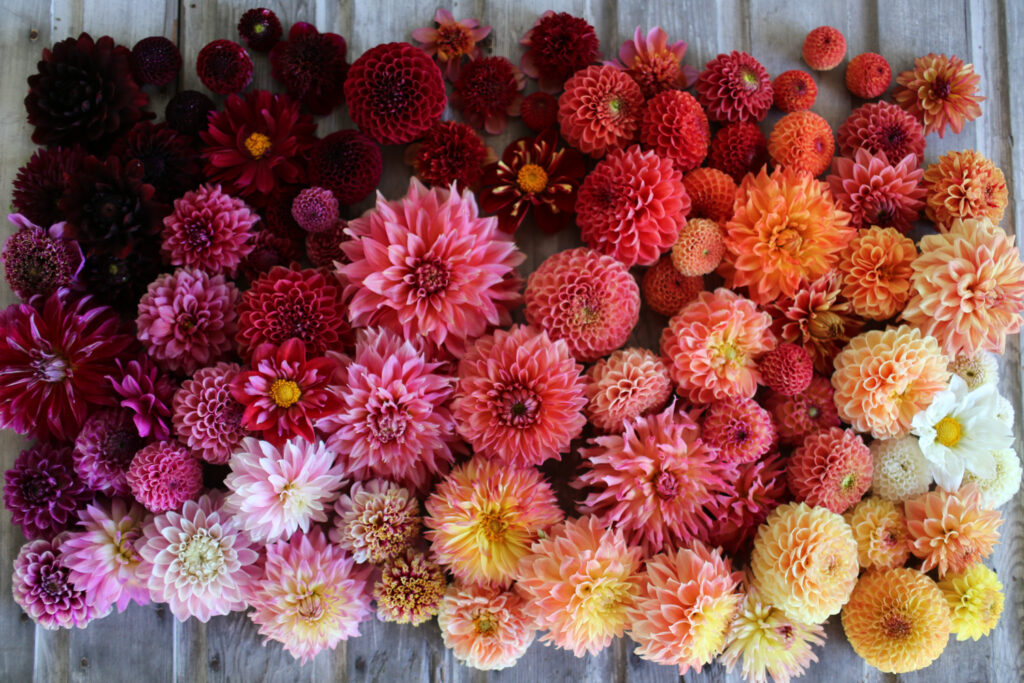By GWMG Kat Granger for the Puslinch Pioneer, September 2021

I have Dahlias in my garden. How can I save them over the winter?
Dahlia Fever is a thing! These flowers have an addicting way about them – once bitten by the bug there is no going back! They add spectacular diversity of beauty to the garden and unparalleled cut flowers for arrangements. Gardening has seen a massive surge, or more correctly resurgence, in popularity as so many have been at home more than ever.
Dahlias really come into their own this time of year when the temperature cools down. The colours perk up and peek bloom time unveils an astounding array of sizes, shapes, colours and classifications. The American Dahlia Society (ADS) is the bible for dahlias and a lot of information is available. A couple of Canadian groups for those interested in learning more or perhaps showing their dahlias are the Canadian Dahlia & Chrysanthemum Society and the Hamilton and District Chrysanthemum & Dahlia Society.
Dahlias are grown from a tuber, much like a potato. Hard to imagine that it will produce buckets of stunning blooms and grow more tubers for you to share. These tubers are started in the spring. I like to start mine inside in April in pots to give them a head start although they can be started outside directly once the ground has warmed up. Dahlias do not like cold soil and may rot.
Once the frost has blackened the top growth, cut it off and dig the tuber, which hopefully has grown into a clump of tubers. Here’s the thing – you don’t have to. Just purchase a new tuber next year and try a new variety – there are SO many – try something new. If you do wish to save the tubers there are a few tried and true methods to choose from.
The clumps will be muddy and must be left to dry/cure somewhere warm and dry for a few days after having been carefully dug so not to break the necks of the tubers. Wash with a hose before drying which makes it easier to divide them or store as is once dry and divide in the spring– your choice.
The tubers can be packed into slightly damp peat moss, not touching each other to prevent rot, in a plastic container with a lid, or individually wrapped in plastic wrap, and stored in a cool, dark, frost-free space. Make sure to label each variety. It is important they do not dry out over the storage time.
Check your tubers occasionally throughout the storage time and remove any that may have rot.
The tuber has a body, neck and the eyes. If the neck is broken the tuber won’t grow so take care when digging and handling. Above the neck are the eyes, or growth points where the new growth will come from. If the tuber has no eyes, it may grow roots but will not grow so each new section must have a healthy neck and a viable eye.
Have a Happy Healthy Fall everyone!
Katherine Granger, GWMG
Seeds of IMBOLC Seed & Flower Farm
www.seedsofimbolc.ca
